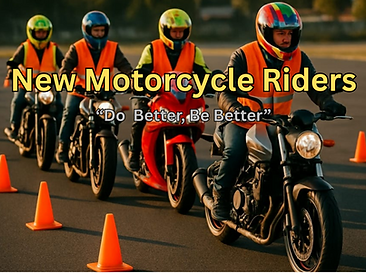What are the benefits of using engine braking?
- NMR

- May 3, 2024
- 3 min read
Updated: Jun 22, 2024
Have you ever heard of the term engine braking or compression braking? If you have or haven't I am going to explain the concept and purpose of it.

Motorcycle engine braking, also known as compression braking, refers to the phenomenon where the engine's resistance to turning slows down the motorcycle when the throttle is closed or when the rider downshifts gears. Unlike in a car, where braking is primarily accomplished by applying the brakes, engine braking plays a significant role in slowing down a motorcycle's speed.
Here's how motorcycle engine braking works:
1. Throttle Closure: When the rider releases the throttle, the engine's fuel supply is cut off, causing the throttle valve to close. This reduces the amount of air and fuel mixture entering the engine cylinders, which decreases engine power output.
2. Reduced Combustion: With the throttle closed, the engine produces less power and generates less torque. As a result, there is less force driving the motorcycle forward.
3. Increased Resistance: As the throttle is closed, the engine's pistons continue to move up and down in the cylinders. During this process, the pistons compress the air-fuel mixture, creating resistance to the engine's rotation. This resistance helps to slow down the motorcycle's speed.
4. Transmission and Gearing: When the rider downshifts gears while decelerating, the motorcycle's transmission and gearing come into play. Downshifting to lower gears increases the engine's rpm, which intensifies engine braking by generating higher levels of resistance.
5. Controlled Deceleration: Engine braking allows riders to decelerate smoothly and gradually without relying solely on the brakes. By modulating the throttle and downshifting gears, riders can control the rate of deceleration and maintain stability while approaching corners, intersections, or stops.
Motorcycle engine braking offers several advantages, including:
- Reduced Brake Wear: By utilizing engine braking, riders can reduce reliance on the brakes, thereby minimizing brake pad and rotor wear. This can prolong the lifespan of braking components and reduce maintenance costs over time.
- Enhanced Control: Engine braking provides an additional means of speed control, allowing riders to manage speed more effectively in various riding situations. It can complement traditional braking techniques and help maintain stability during cornering or descending steep grades.
- Improved Traction: Engine braking can help maintain traction by providing a smoother transition between throttle-off and braking. By distributing braking forces more evenly between the front and rear wheels, engine braking can help prevent wheel lockup and skidding, especially on slippery surfaces.
- Increased Fuel Efficiency: When used judiciously, engine braking can contribute to better fuel efficiency by reducing the need for constant acceleration and braking. By harnessing the engine's inherent braking capabilities, riders can conserve momentum and energy, leading to improved fuel economy.
Overall, motorcycle engine braking is a valuable technique that enhances rider control, safety, and efficiency on the road. By understanding how engine braking works and practicing proper throttle and gear management, riders can optimize their braking performance and enjoy a smoother, more controlled riding experience.
Subscribe to New Motorcycle Riders website, www.newmotorcycleriders.com, for more motorcycle related content.
Visit our marketplace, https://www.newmotorcycleriders.com/our-story, with these exclusive links for deals and discounts on all your motorcycle parts and accessories needs!
Amazon - https://amzn.to/3VP0BrS
Ebay - https://ebay.us/TSSzbN
Pictory AI - https://pictory.ai?ref=8fq2j
Unlock Credit Secrets - https://www.fixflipcircle.com/free-ebook?hop=newmotorcy&hopId=efa9416e-d3c8-4a51-9086-0dff7de15eb8
Rakuten - www.rakuten.com/r/THEJAC241?eeid=28187
Sharper Image - https://click.linksynergy.com/fs-bin/click?id=sJhbcd2cUuQ&offerid=1429613.10000943&bids=1429613.10000943&type=3&subid=0
Type S Auto - https://click.linksynergy.com/fs-bin/click?id=sJhbcd2cUuQ&offerid=1407815.4&bids=1407815.4&type=3&subid=0





.png)



Comments